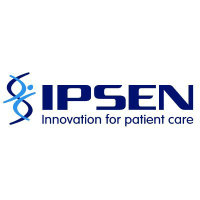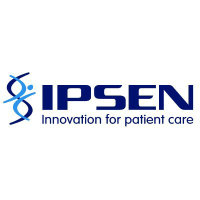
Ipsen SA
PAR:IPN


| US |

|
Johnson & Johnson
NYSE:JNJ
|
Pharmaceuticals
|
| US |

|
Berkshire Hathaway Inc
NYSE:BRK.A
|
Financial Services
|
| US |

|
Bank of America Corp
NYSE:BAC
|
Banking
|
| US |

|
Mastercard Inc
NYSE:MA
|
Technology
|
| US |

|
UnitedHealth Group Inc
NYSE:UNH
|
Health Care
|
| US |

|
Exxon Mobil Corp
NYSE:XOM
|
Energy
|
| US |

|
Pfizer Inc
NYSE:PFE
|
Pharmaceuticals
|
| US |

|
Palantir Technologies Inc
NYSE:PLTR
|
Technology
|
| US |

|
Nike Inc
NYSE:NKE
|
Textiles, Apparel & Luxury Goods
|
| US |

|
Visa Inc
NYSE:V
|
Technology
|
| CN |

|
Alibaba Group Holding Ltd
NYSE:BABA
|
Retail
|
| US |

|
3M Co
NYSE:MMM
|
Industrial Conglomerates
|
| US |

|
JPMorgan Chase & Co
NYSE:JPM
|
Banking
|
| US |

|
Coca-Cola Co
NYSE:KO
|
Beverages
|
| US |

|
Walmart Inc
NYSE:WMT
|
Retail
|
| US |

|
Verizon Communications Inc
NYSE:VZ
|
Telecommunication
|
Utilize notes to systematically review your investment decisions. By reflecting on past outcomes, you can discern effective strategies and identify those that underperformed. This continuous feedback loop enables you to adapt and refine your approach, optimizing for future success.
Each note serves as a learning point, offering insights into your decision-making processes. Over time, you'll accumulate a personalized database of knowledge, enhancing your ability to make informed decisions quickly and effectively.
With a comprehensive record of your investment history at your fingertips, you can compare current opportunities against past experiences. This not only bolsters your confidence but also ensures that each decision is grounded in a well-documented rationale.
Do you really want to delete this note?
This action cannot be undone.

| 52 Week Range |
100.7
125.8
|
| Price Target |
|
We'll email you a reminder when the closing price reaches EUR.
Choose the stock you wish to monitor with a price alert.

|
Johnson & Johnson
NYSE:JNJ
|
US |

|
Berkshire Hathaway Inc
NYSE:BRK.A
|
US |

|
Bank of America Corp
NYSE:BAC
|
US |

|
Mastercard Inc
NYSE:MA
|
US |

|
UnitedHealth Group Inc
NYSE:UNH
|
US |

|
Exxon Mobil Corp
NYSE:XOM
|
US |

|
Pfizer Inc
NYSE:PFE
|
US |

|
Palantir Technologies Inc
NYSE:PLTR
|
US |

|
Nike Inc
NYSE:NKE
|
US |

|
Visa Inc
NYSE:V
|
US |

|
Alibaba Group Holding Ltd
NYSE:BABA
|
CN |

|
3M Co
NYSE:MMM
|
US |

|
JPMorgan Chase & Co
NYSE:JPM
|
US |

|
Coca-Cola Co
NYSE:KO
|
US |

|
Walmart Inc
NYSE:WMT
|
US |

|
Verizon Communications Inc
NYSE:VZ
|
US |
This alert will be permanently deleted.
 Ipsen SA
Ipsen SA
Ipsen SA
Investor Relations
Ipsen SA, headquartered in France, is a prominent player in the global biopharmaceutical realm, weaving its story through its commitment to innovation and specialization. Founded in 1929, this family-owned company has evolved significantly, utilizing a diverse mix of scientific research and strategic acquisitions to fuel its growth. Ipsen operates through three principal business segments: Specialty Care, Consumer Healthcare, and Research & Development. Specialty Care, which includes oncology, neuroscience, and rare diseases, is the heart of Ipsen's portfolio, contributing the lion's share of its revenue. The company has honed its focus on developing targeted therapies for complex conditions, leveraging its adeptness in peptide and toxin research. Its success lies in the balance of nurturing homegrown research while acquiring promising biotech firms and novel therapies to expand its offerings and market reach.
Beyond its scientific and research prowess, Ipsen's financial robustness stems from a well-orchestrated strategy that intertwines its business operations. The company generates substantial revenue by not only launching innovative products but also through strategic partnerships and licensing agreements that broaden its geographic footprint. Ipsen’s Consumer Healthcare segment complements its operations by delivering over-the-counter products that maintain a steady cash flow, though on a smaller scale compared to Specialty Care. Meanwhile, its Research & Development arm remains the crucible for future growth, as Ipsen invests significantly in pioneering future therapies that align with its core areas of expertise. Through this strategic tapestry, Ipsen has positioned itself as a dynamic entity in the biopharmaceutical industry, consistently striving to deliver value while advancing the frontiers of medicine.

Ipsen SA, headquartered in France, is a prominent player in the global biopharmaceutical realm, weaving its story through its commitment to innovation and specialization. Founded in 1929, this family-owned company has evolved significantly, utilizing a diverse mix of scientific research and strategic acquisitions to fuel its growth. Ipsen operates through three principal business segments: Specialty Care, Consumer Healthcare, and Research & Development. Specialty Care, which includes oncology, neuroscience, and rare diseases, is the heart of Ipsen's portfolio, contributing the lion's share of its revenue. The company has honed its focus on developing targeted therapies for complex conditions, leveraging its adeptness in peptide and toxin research. Its success lies in the balance of nurturing homegrown research while acquiring promising biotech firms and novel therapies to expand its offerings and market reach.
Beyond its scientific and research prowess, Ipsen's financial robustness stems from a well-orchestrated strategy that intertwines its business operations. The company generates substantial revenue by not only launching innovative products but also through strategic partnerships and licensing agreements that broaden its geographic footprint. Ipsen’s Consumer Healthcare segment complements its operations by delivering over-the-counter products that maintain a steady cash flow, though on a smaller scale compared to Specialty Care. Meanwhile, its Research & Development arm remains the crucible for future growth, as Ipsen invests significantly in pioneering future therapies that align with its core areas of expertise. Through this strategic tapestry, Ipsen has positioned itself as a dynamic entity in the biopharmaceutical industry, consistently striving to deliver value while advancing the frontiers of medicine.





























 You don't have any saved screeners yet
You don't have any saved screeners yet
